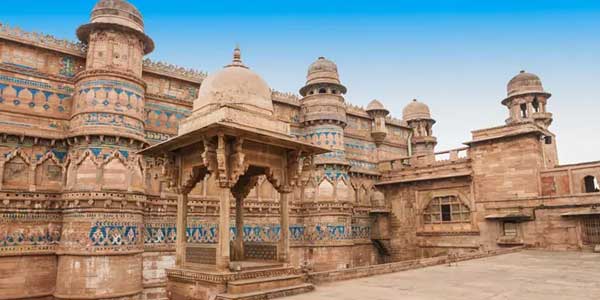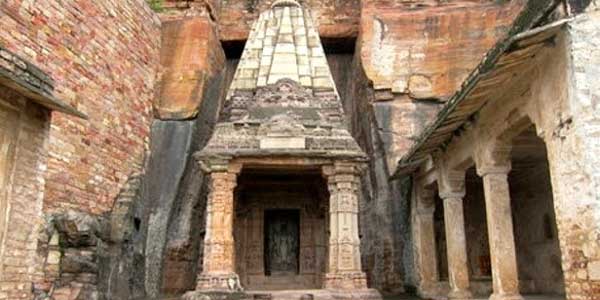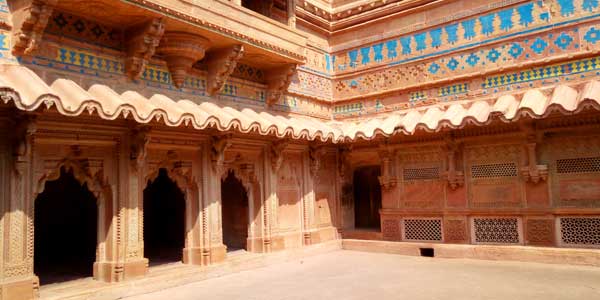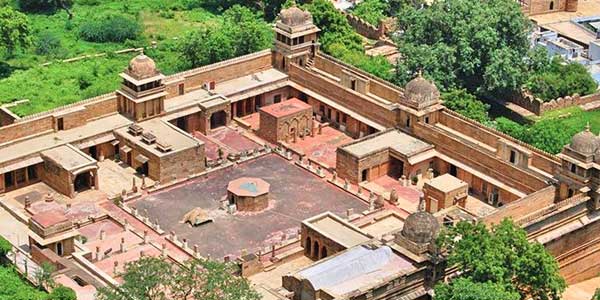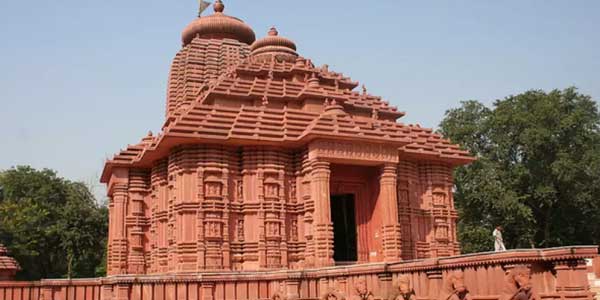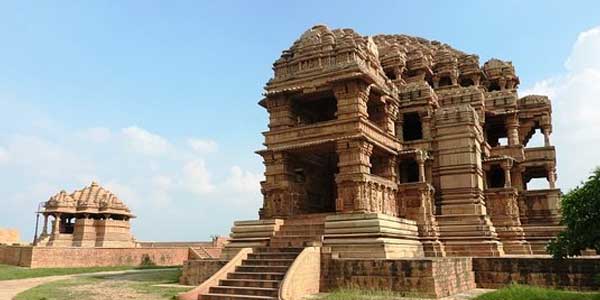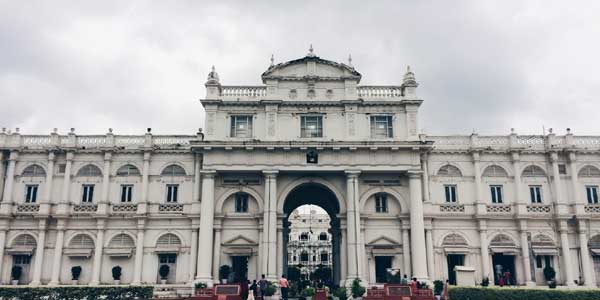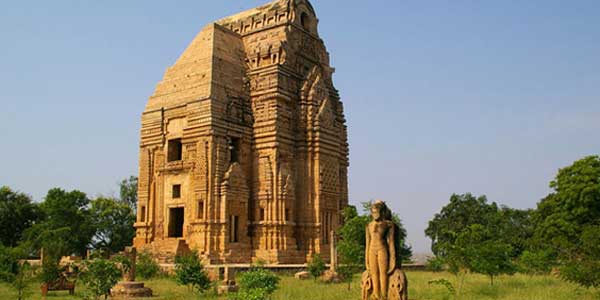
Jai Vilas Palace, Gwalior
A splendor of a different kind exists in the Jai Vilas Palace, current residence of the Scindia family. Some 25 rooms have been turned into the Jivaji Rao Scindia Museum, and in these rooms, so evocative of a regal lifestyle, the past comes alive. Jai Vilas is an Italianate structure which combines the Tuscan and Corinthian architectural modes. The imposing Darbar Hall has two central chandeliers weighing a couple of tonnes, and hung only after ten elephants had tested the strength of the roof. Ceilings picked out in gilt, heavy draperies and tapestries , fine Persian carpets and antique furniture from France and Italy are the features of these spacious rooms. Eye catching treasures include : a silver train with cutglass wagons which served guests as it chugged around the table on miniature rails; a glass cradle from Italy used for the baby Krishna each Janmashtami, silver dinner services and swords that were once worn by Aurangzeb and Shah Jahan. These are, besides, personal momentoes of past members of the Scindia family : the jeweled slippers that belonged to Chinkoo Rani, four-poster beds, gifts from practically every country in the world, hunting trophies and portraits. The Scindia Museum offers an unparalled glimpse into the rich culture and lifestyle of princely India.
Jai Vilas Palace, Gwalior: History
The Jai Vilas Palace was constructed in 1874 by Jayajirao Scindia of the Maratha Scindia Dynasty, the then Maharaja of Gwalior. The majestic palace was built to extend a grand welcome to the then Prince of Wales, King Edward VII, for his visit in 1875. Constructed at a whopping cost of 1 crore rupees, the palace was designed to be an exceptional feat in grandeur at every level. It went on to become an imperial residence for the members of the Scindia royal family.
Much later, a section of the palace was turned into a grand museum under the orders of Rajmata Vijayaraje Scindia. She created the museum to honor the memory of her husband, Jivajirao Scindia, who was the last Maharaja to rule over Gwalior. The museum, which is named HH Maharaja Sir Jiwajirao Scindia Museum, was inaugurated on 12th December 1964 by Dr. Sarvapalli Radhakrishnan, the then president of India.
Jai Vilas Palace Architecture
The Jai Vilas Palace is a splendid portrayal of European architecture. Designed by the famous architect Sir Michael Filose, the stunning three-storied palace exhibits the Tuscan style of architecture in the first story, a blend of the Italian-Doric style in the second story, and the Corinthian style in the third story. The edifice covers an area of 1,240,771 square feet, making it one of the top tourist places to visit in Gwalior.
There are 400 rooms in this sprawling palace, featuring Italian marble flooring, ornate accessories, lavish Persian carpets, and rare antiquities from various parts of the world. The Durbar Hall is the most magnificent part of this palace while there is also a massive Banquet Hall adorned with an elongated dining table. A unique attraction of the dining table is the silver train with carriages designed out of cut glass. This train was used as a trolley to serve food, cigars, and brandy to guests seated around the table.
The rooms of this regal residence cum museum are decorated with a variety of items and artifacts carrying immense historical significance. The palace has an indoor swimming pool designed for the women of the royal household, which boasts of a boat as well.
Gwalior Monuments
Gwalior Monuments lies to the south of Agra, about 122 km. A historic town renowned for its ancient and magnificent forts and palaces, Gwalior is home to many tourist attractions worth visiting when on a tour of Madhya Pradesh to Gwalior. Gwalior's temples and museums are among the city's many tourist attractions.
Gwalior occupies an significant role in the medieval history and struggle for independence in India. The town is also renowned for being home to many of the country's respected colleges and schools. Rich in cultural heritage and architectural marvels, Gwalior was placed under the control of many dynasties of the Pratiharas, Kacchwahas and Tomars heroic Rajput clans. This city has preserved its rich cultural heritage, expressed marvelously in its palaces, temples and museums.
The Gwalior Monuments and Museums attract numerous visitors from every corner of the globe to Gwalior. Gwalior Monuments and Museums are not only buildings in stone and brick, but they are the living examples from which we can go back in time and discover India's past.
Gwalior India's Monuments in and Museums are outstanding examples of the glorious architectural heritage of the past. For decades, the remains of such buildings tended to fascinate art lovers and historians. The Monuments and Museums in Gwalior, worldwide revered for their architectural splendour, owe their execution to the imagination of great rulers of the past Those who dared to push their thoughts to the very limits of human thinking. From the pages of their history book each of these monuments narrates a distinctive tale. Gwalior museums houses a rich and varied array of ancient sculptures, artifacts, and buildings.
Built on steep sandstone ground, Gwalior Fort is the most exemplary among the Gwalior Monuments and Museums. Another famous monument inside the walls of the Fort is Gujari Mahal from the 15th century – designed as a symbol of Raja Mansingh Tomar 's love for his Gujar wife, Mrignayani. Constructed between 1486 and 1517 by Raja Mansingh, Mansingh Palace is yet another wonderful architectural splendor. The Jai Vilas Palace-current residence of the Scindia family-is also popular among the monuments and museums in Gwalior. Constructed to show a fine mix of Tuscan and Corinthian architectural styles, this palace is one of the city's main attractions.


